Posted: October 11th, 2018 | No Comments »
A slight divergence from China, but regular readers may be interested in my latest Crime and the City column for The Literary Hub and Crime Reads – this fortnight on Phnom Penh…click here…

Posted: October 10th, 2018 | No Comments »
A History of Hong Kong in 50 Maps
A selection of unusual maps, charts and plans 1775 – 1979
 The exhibition continues until 16th November 2018
Wattis Fine Art Gallery
20 Hollywood Road, 2/F, Central, Hong Kong
www.wattis.com.hk
Gallery open: Monday – Saturday 11am – 6pm
Posted: October 9th, 2018 | No Comments »
As regular readers will know during the last four years of the anniversary of the centenary of WW1 a lot has been happening about the old Chinese Labour Corps – the Chinese who came and worked the battlefields during the conflict. Sadly, despite the Penguin China and WW1 series of books, various conferences organised etc, knowledge of Chinese participation in WW1 remains very low.
Now another attempt to raise the CLC’s profile….Forgotten is a play by Daniel York Loh, directed by Kim Pearce – details below – it’s on at the Arcola Theatre in Dalston, London from 13/10/18 to 17/11/18….

‘The foreign devils will be entranced by our performance and line our path back to Shandong with gold and cherry blossoms…’
1917. Shandong Province, Northern China. Times are tough in Horse Shoe Village. Old Six and Second Moon struggle to earn enough to feed their young child. Big Dog struggles to overcome opium addiction and for Eunuch Lin, the fall of the Imperial Dynasty couldn’t have come at a worse time. Could a fierce war far away in Europe present an opportunity to put both themselves and their struggling nation on its feet?
é—忘 means ‘Forgotten’. ‘Left behind’. ‘Erased’.
Forgotten é—忘 is inspired by the little-known story of the 140,000 Chinese Labour Corps who left everything and travelled half way around the world to work for Britain and the Allies behind the front lines during World War One.
More details and tickets here
Posted: October 8th, 2018 | No Comments »
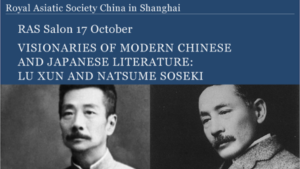
When we encounter news these days about relations between China and Japan, it is often along fairly depressing lines. It is easy to forget therefore that on a profound cultural and literary level, the relationship between the two nations has been a warmly appreciative one.
Nowhere is this more obviously on display than the connection between the two giants of modern Chinese and Japanese literature – Lu Xun and Natsume Soseki, both of whom occupy iconic positions in their nation’s literatures.
Lu Xun is best known for his savage satires on the plight of his native China in the early twentieth century – beset with a feudal mindset, internal divisions and left open to exploitation by warlords and foreign colonial powers.
Natsume Soseki meanwhile had revolutionized Japanese literature with his satirical masterpiece I am a Cat, which had cast a quizzical, feline eye over Japan’s own rapidly modernizing and westernizing nation state.
What is not commonly understood, however, is how closely these two major literary figures of China and Japan are connected. In this talk, author and critic Damian Flanagan will take you on a thrilling world journey from Baker Street in London to the plains of Manchuria, from a university classroom in Sendai, northern Japan to the streets of Beijing, as we uncover how these two great minds set about revolutionizing world literature.
Damian Flanagan is a writer and literary critic. He has written several books on Japanese literature, including three books on Natsume Soseki and a biography of Yukio Mishima in both Japanese and English. He also writes articles on culture, literature, property and travel for newspapers around the world, from The Irish Times to Australia’s Sun Herald. He is a regular book reviewer for The Japan Times, holds a PhD in Japanese Literature from Kobe University, Japan, and has won the Japan-US Friendship Commission Prize for the translation of Japanese Literature.
R.S.V.P. to
Entrance fee
(includes one drink)
Members: 50 RMB
Students: 50 RMB
Non-Members:Â 100 RMB
Venue
Café Sambal
259 Jiashan Lu, Jiashan Market, Block A, No 37, near Jianguo Xi Lu
Posted: October 4th, 2018 | No Comments »
I note that American Mystery Classics are republishing some old Ellery Queen novels, including 1934’s The Chinese Orange Mystery. There’s actually no particular China-connection beyond the murder victim being a collector of Chinese stamps and a missing Chinese orange (as they used to call tangerines). The novel was one of Queen’s “nationality” mysteries along with other titles such as The Siamese Twin Mystery and The Spanish Cape Mystery. Anyway, regular readers of this blog will know I do like to show a lot of covers and the first US edition cover for this book quite interested me as it has some Chinoiserie themes….
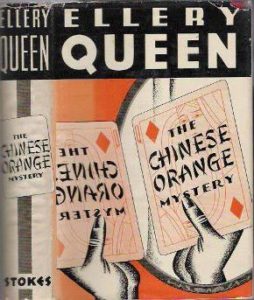 cover of the first US edition, 1934
cover of the first US edition, 1934
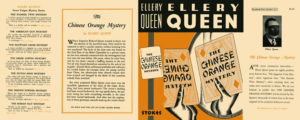
Posted: October 3rd, 2018 | No Comments »
Pamela Wynne was a popular romance writer from the 1920s to her death in 1959. She published over 60 novels. Born in London and educated in Switzerland, in 1905 Pamela married William Herbert Schroder Scott in Bombay. They had three children; the marriage ended in 1932 and Wynne moved back to England and lived at Sissinghurst. Her extended stay in India provided fodder for may of her books that came with the requisite Orientalist covers….




Posted: October 3rd, 2018 | No Comments »
I was just re-reading John Blofeld’s marvellous City of Lingering Splendour which covers his sojourn in Peking between 1934 and 1937…it has a rather good map of the old city’s outline and major districts too…you can click on it to enlarge….
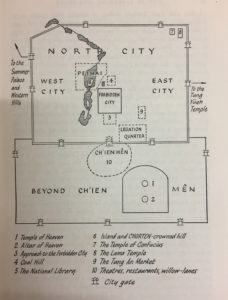

Posted: October 2nd, 2018 | No Comments »
I’ll be on a panel at the Cheltenham Literary Festival this coming Saturday, as part of their East Meets West programme (which includes the likes of Xiaolu Guo, David Peace, Sarah Howe, Min Jin Lee, Ian Buruma, Madeleine Thien etc).
My panel is
The Korean Peninsula – Peace at Last
For decades the Korean peninsula has lived in the shadow of unresolved conflict and an escalating nuclear threat from the hostile and paranoid regime in the North. Following the extraordinary Trump/Kim summit in Singapore, can the international community relax and look forward to peaceful coexistence with a born-again North Korea? Chatham House Director Robin Niblett brings Jieun Baek, author of North Korea’s Hidden Revolution, author and Korea watcher Paul French and Hazel Smith, Professor of International Security and Korean Studies and author of North Korea: Markets and Military Rule, to the table to debate the possible outcomes.
that event here
everything that’s on in Cheltenham here


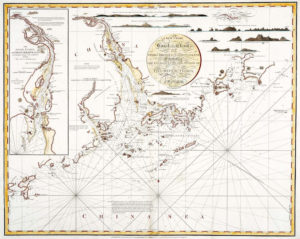 John William Norrie -Â A New Chart of the Coast of China from Pedra Branca to St. John’s Island 1840
John William Norrie -Â A New Chart of the Coast of China from Pedra Branca to St. John’s Island 1840









